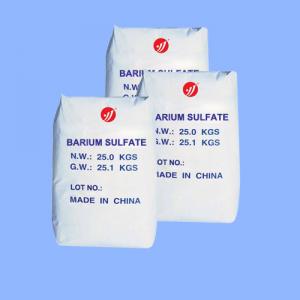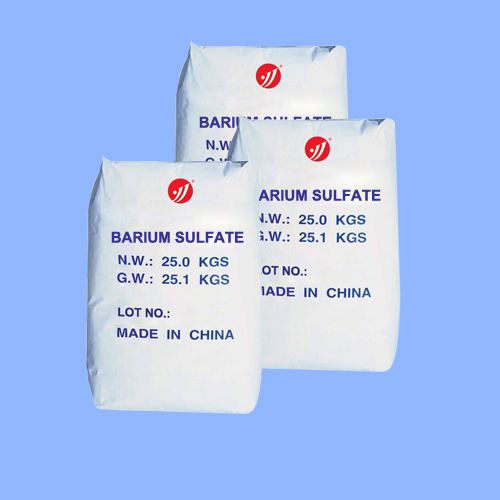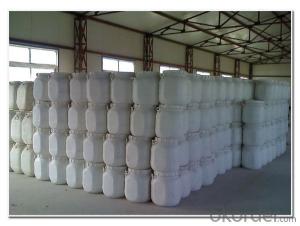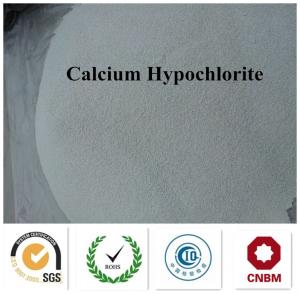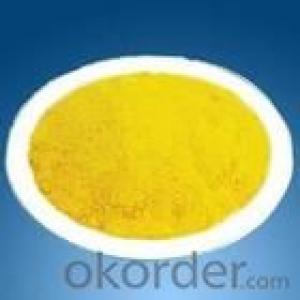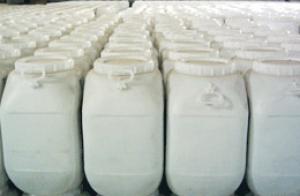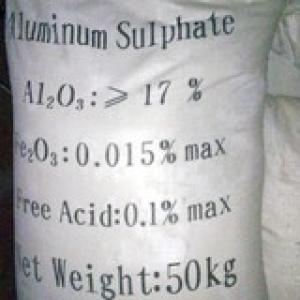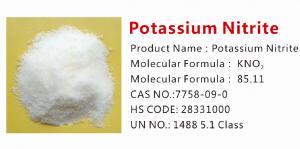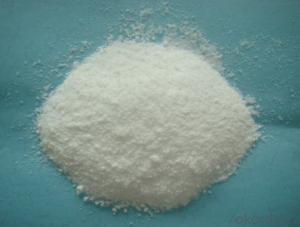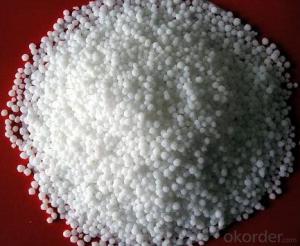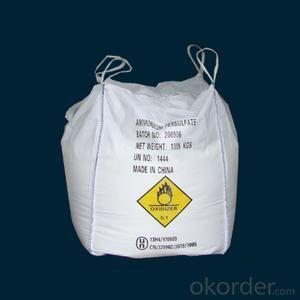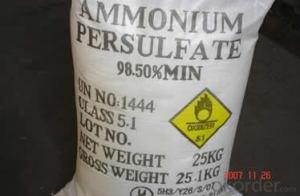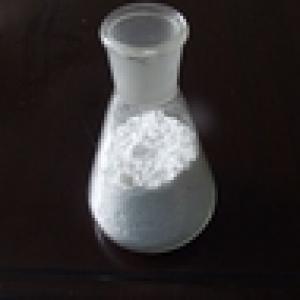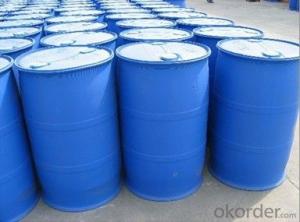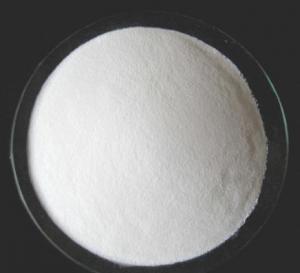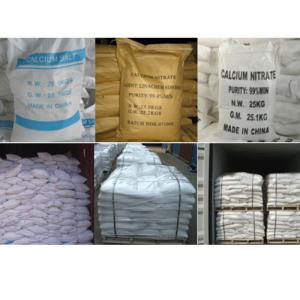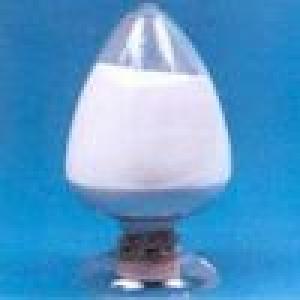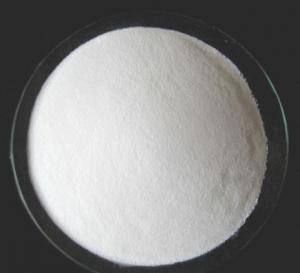Barium Sulfate Price
- Loading Port:
- Shanghai
- Payment Terms:
- TT OR LC
- Min Order Qty:
- -
- Supply Capability:
- 3000 m.t./month
OKorder Service Pledge
OKorder Financial Service
You Might Also Like
Barium Sulfate
Product Description:
Yuejiang Brand- Barium sulfate is produced in advanced chemical precipitation method within good physical properties, low mechanical impurity, even fineness; white powder or paste, non-toxic, insoluble in water, having stable chemical property; can absorb X-ray, and endow the materials with high density and surface finish.
Applications:
Barium Sulfate is can be widely used in paint, printing ink, plastics, coating, enamel, glass, electronic industries etc.
Basic Information:
Name: | Barium Sulfate (BaSO4) |
CAS NO.: | 7727-43-7 |
|
|
Appearance: | White powder |
Specific gravity: | 4.4 g/cm3 |
Technical Specifications:(Standard:Q/SNBJ1-2012)
NO. | Item | Unit | Index | |
Superfine BaSO4 | Precipitated BaSO4 | |||
1 | Barium sulfate content | % | ≥98 | ≥98 |
2 | 105 °C volatile matter | % | ≤ 0.3 | ≤ 0.3 |
3 | Water solubles content | % | ≤0.3 | ≤0.2 |
4 | Water content | % | ≤0.15 | ≤0.15 |
5 | pH-value of aqueous suspension |
| 6.5-8.0 | 6.5-8.0 |
6 | Oil absorption(depend on different fineness) | % g/100g | 10-30 | 10-30 |
7 | Fe content | % | ≤0.003 | ≤0.002 |
8 | Whiteness | % | 92-96 | 95-98 |
fineness: 325-mesh, 1250-mesh, 3000-mesh, 6000-mesh (Fineness can be custom-made upon client's request) | ||||
- Q: Inorganic salts play an important role in maintaining the life activities of living organisms. It is mainly in the form of living organisms.
- Inorganic salts are mineral nutrients present in the body and in the food. Most inorganic salts in the cells are present in the form of ions, consisting of organic matter and inorganic compounds.
- Q: What is inorganic salt
- As a result of metabolism, every day a certain amount of inorganic salts from a variety of ways out of the body, which will be added through the diet. The metabolism of inorganic salts can be judged by analyzing the concentration of blood, hair, urine or tissue. The role of inorganic salts in the human body is interrelated. In the appropriate concentration range beneficial to the health of people and animals and plants, lack or too much can cause disease, and disease and affect its metabolism, often increase its consumption. In China, the lack of calcium, iron and iodine is more common. Selenium, fluoride and other geochemical environment with the different, both the lack of disease such as Keshan disease and Kashin-Beck disease, teeth, etc., there are too many diseases such as fluorosis and selenium poisoning.
- Q: How to get an inorganic salt
- Inorganic salts are salts of inorganic compounds, formerly known as minerals. Plant growth needs N, P, K three elements and Ca, Zn, B, Mg, S, Fe and other trace elements. Depending on the type and amount of inorganic salts required for plant life, the water and various proportions of inorganic salts are scientifically formulated into plant nutrient solutions. The method of cultivating plants with plant nutrient solution is called soilless cultivation. The inorganic salts used to prepare the nutrient solution are generally not available for extraction, such as potassium nitrate, calcium nitrate, magnesium sulfate, potassium dihydrogen phosphate, copper sulfate, zinc sulfate and the like, and the reagent may be a chemical fertilizer. The purity of the reagent is high and the impurities of the fertilizer are more. If you can not get it, you can use soil leaching solution (fertile soil plus fresh water, the liquid obtained after filtration), which generally contains a variety of inorganic salts.
- Q: How much of the body's inorganic salts account for the weight of the body?
- The inorganic salts in the human body account for about 5%
- Q: Octopus why the lack of boron-containing inorganic salts can cause rape to flow only without fruit
- When the boron deficiency occurs, pollen tube germination is affected and poor fertilization leads to seed formation.
- Q: I had asked a similar question on GC operation last week, but for different kinds of compounds.For my biochem research project at school, I'm testing the ability of a species of bacteria to biodegrade alcohols found in gasoline (methanol, ethanol, isopropyl, tert-butyl and cyclohexanol). The bacteria is growing in a solution of minute amounts of alcohols and Mineral Medium, which is basically just water and dissolved inorganic salts (CaCl2, KH2PO4, NH4NO3 and MgSO4).I know GC's are primarily used to separate organic mixtures. Can a GC separate organic compounds dissolved in salt water? Is it safe to put salt water in a GC? Or would I have to do an extraction to separate the alcohols and run the organic extract through the GC?
- Do not let salts enter the GC. You will have to perform an extraction step and run that. Salts can precipitate in the column or degrade into reactive species that can corrode the GC. Water is OK since it will not destroy the column (I've run aqueous solutions before), but salts are not.
- Q: The inorganic salt is composed of?
- Inorganic salts are the general term for various inorganic salts. They are composed of inorganic acid radicals and metal cations or ammonium salts, mainly salts of organic acid salts, such as sodium chloride, potassium chloride and so on.
- Q: What substances can detect inorganic salts
- Looks like, a lot of inorganic salt ah, this, I suggest you clear the concept of inorganic salt under you.
- Q: ATP components are not inorganic salts
- Of course there is no inorganic salt
- Q: Which minerals is richest source of Inorganic Salts ?
- Minerals are inorganic salts - eg.potassium nitrate - absorbed by plants from soil - a good source of inorganic nitrogen and potassium.
Send your message to us
Barium Sulfate Price
- Loading Port:
- Shanghai
- Payment Terms:
- TT OR LC
- Min Order Qty:
- -
- Supply Capability:
- 3000 m.t./month
OKorder Service Pledge
OKorder Financial Service
Similar products
Hot products
Hot Searches
